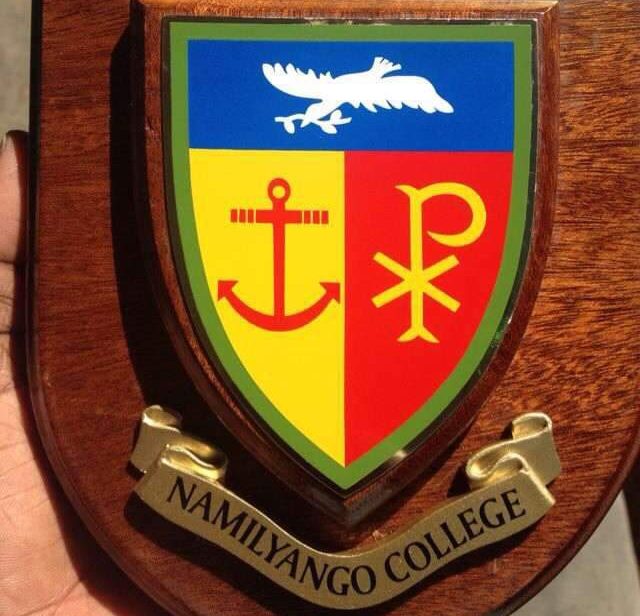As Uganda commemorates 58 years of Independence, we take a look at some alumni of Namilyango College at the centre of the political events leading up to Uganda’s independence.
Andrew Frederick Kimeze Mpanga
At Namilyango, Mpanga was a skilled boxer. In 1946, he finished runner up in the welter weight category, his fight a curtain-raiser for the Tom Kawere (Namilyango) and Constable A. Hassan (Uganda Police) fight. He sat both the London Chamber of Commerce exams and the Makerere University College entrance exams, passing both. He continued his further studies at Makerere, and the Universities of Hull, Oxford and Harvard, specialising in law.
He established a law firm with Sam Njuba, a forerunner of the present day Kalega Njuba & Co. advocates firm.
In January 1961 he was part of a four-man committee appointed by the Buganda Lukiiko to draft a detailed plan for Buganda’s push for Independence. Other members of the committee included Amos K. Sempa, Godfrey Binaisa and Dr. Luyimbazi Zake. Mpanga was a member of the Kabaka Yekka, and campaigned heavily as the party swept the elections in Buganda.
Mpanga served in the first post-independence cabinet of Buganda as Attorney General.
Lawrence Mayanja Kyompitira Sebalu
Born in 1931 in Naggalama, Kyagwe, Sebalu got his early education at Namilyango College. He continued for his further studies in India at Punjab University, Calcutta University and Delhi University, obtaining degrees in economics (1956) and law (1958).
Upon return from his studies, Sebalu started a law firm with Benedicto Kiwanuka. Kiwanuka later on joined the Democratic Party and was elected party president to replace Matayo Mugwanya. Sebalu subsequently joined his professional colleague in the DP ranks.
During the 1961 General Election, Sebalu stood as a representative of Kyaggwe North East in the National Assembly on the DP ticket. He won his seat, as DP swept the board taking a total of 44 seats of the available 82. As leader of DP, Kiwanuka was tasked with forming a government and he named Sebalu Minister of Economic Development. Less than a year later Sebalu took over from Christopher George Melmoth as Minister of Finance. The DP was defeated in the 1962 General Election, and Sebalu lost both his seats on the cabinet and in parliament. He returned to private legal practice after Independence.
Mathias Mulumba Ngobi
Mathias Mulumba hailed from Kamuli, one of the eleven children of Mikaeli Isabirye, a catechist, and Lilian Naisanga. He started his education at Kamuli Primary School, before proceeding to Kidiki Primary School and Budini Junior School.

Ngobi joined Namilyango College in 1943. He was a vice captain of Campling house, and was also raised to the rank of “Corporal” in the Namilyango Cadet Corps. He represented Campling House in the 120-yeard hurdles race and the pole vault competitions, finishing second in the latter. Upon completing his Cambridge School Certificate in 1945, Ngobi continued to Makerere University College to study higher sciences.
His political career began in 1958, when he stood for election and won the Busoga South seat in the Legislative Council. Ngobi, alongside William Nadiope, William Rwetsiba, CB Katiti and George Magezi formed the Uganda People’s Union, which would later join Milton Obote’s faction of the Uganda National Congress to form the Uganda People’s Congress. In the 1962 elections Ngobi won his seat to the National Assembly, and was named to the cabinet as Minister of Agriculture and Cooperatives.
Cuthbert Joseph Obwangor
Cuthbert Joseph Obwangor was born in November 1920, in Omasia, present day Bukedea. Obwangor studied at Ngora Primary School and Nyenga Seminary before joining Namilyango College.
At Namilyango, Obwangor became captain of Biermans House, and subsequently served as School Captain (Head Prefect) 1941-42. While a student he sat and passed the examination for the St. John’s Ambulance Association. After Namilyango, Obwangor studied at the Railway Traffic School in Nairobi, Kenya.
In 1952, Obwangor was elected to the Teso District Council. He joined Ignatius Musaazi’s Uganda National Congress, and he contested (and won) on the party ticket for the Teso seat in the Legislative Council during the 1958 elections. When the party split, he remained with the Obote faction, that later formed the Uganda People’s Congress and served as its Treasurer. When UPC won the 1962 elections, Obwangor returned to the National Assembly as a representative of Teso East. He was named Minister of Regional Administration and Internal Affairs, until 1964 when he was named Minister of Justice and Constitutional Affairs.
Lawrence Kalule Settala
Kalule-Settala was educated at St. Peter’s Nsambya (a contemporary of Benedicto Kiwanuka and Paulo Muwanga), Namilyango College (a contemporary of Matthias Ngobi) and Makerere University College. At Namilyango he was a member of the Cadet Corps.
In the 1962 elections, he was chosen by the Lukiiko to represent Mengo South East in the National Assembly. In the coalition cabinet of Kabaka Yeka and UPC, Kalule-Settala was appointed Minister of Community Development. Two years later he became Minister of Finance, replacing Amos K. Sempa, and also served as Deputy Prime Minister.
References
Bade, A. (1996) Benedicto Kiwanuka: The Man and his Politics. Fountain Publishers, Kampala.
Lwanga-Lunyigo, S. (2014) A History of the Democratic Party of Uganda: The first thirty years (1954-1984). Fountain Publishers, Kampala.
Makubuya, A.N. (2019) Protection, Plunder or Patronage? British Machinations and (B)Uganda’s Struggle for Independence. Cambridge Scholars Publishing.
Mubangizi, M. (22 May 2012). “Feature: The life and times of Cuthbert Obwangor”. The Observer.
Namilyango College Logbook, 1902-1950

